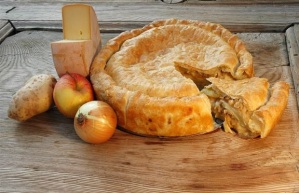Tonight I had a hankering for orange juice, and what better way to use it than with chicken? I prepared the chicken and marinade in the afternoon, and by dinner it was ready to go! This recipe officially serves 4, if you don’t have a hungry husband. I do. So consider it 2 servings, though it’s certainly easy to multiply.
Serve with Jasmine rice. As a drink you could serve either orange juice, or a Tropical Coconut Smoothie.
Orange Chicken
½ – 1 C. orange juice
4 Tbs. lemon juice
2½ Tbs. rice vinegar
5½ Tbs. soy sauce
1 Tbs. grated orange zest
3 Tbs. soft brown sugar
½ tsp. minced fresh ginger root
½ tsp. minced garlic
2 Tbs. chopped spring onion
¼ tsp. red chili flakes (or sambal oelek – chili paste)
2 boneless, skinless chicken breasts, cut into bite-sized pieces or into thin strips
½ C. flour (optional: Instead of this mixture, use Tempura – recipe below)
¼ tsp. salt
¼ tsp. pepper
3 Tbs. Olive oil
3 Tbs. cornflour + 2 Tbs. water, mixed to a paste
Mix the first set of ingredients into a large Ziploc bag (tip: Set it in a bowl for easy filling, and keeping the liquids together to cover the chicken). Prepare the chicken; add it to the bag, seal, and massage all together well. Refrigerate at least 2 hours.
When you’re ready to cook: In another resealable plastic bag, mix the flour, salt and pepper. Add the marinated chicken pieces, seal the bag and shake to coat.
Heat the olive oil in a large frying pan or wok over medium heat. Place chicken into the pan, and brown on both sides. Drain on a plate lined with paper towels, and set aside.
Wipe out the pan, and add the sauce. Bring to the boil over medium-high heat. Stir the cornflour paste into the sauce. Reduce heat to medium low, add the chicken pieces, and simmer about 5 minutes, stirring occasionally.
Serve with hot Jasmine rice, or stir-fried rice with shavings of orange peel or ginger added.
Tempura Batter
1 egg yolk, beaten
1 ½ C. ice water or very cold club soda
1 C. (250 ml) all – purpose flour or rice flour, plus additional for dredging
Mix together; dredge your meat and cook as directed.
 FILLING:
FILLING:








